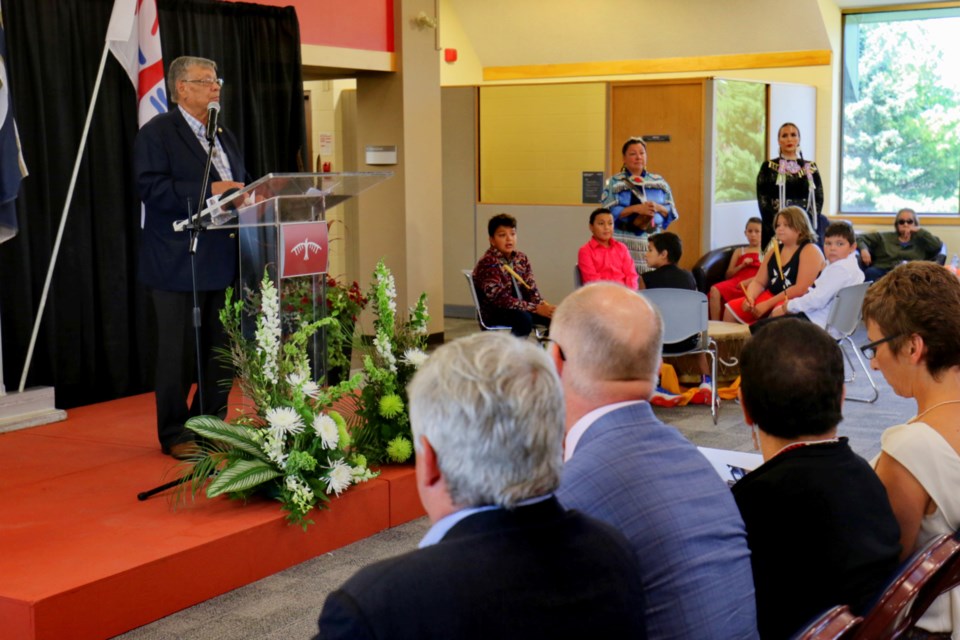It’s graduation time for students of all ages who are looking back at accomplishments and forward to the future.
Michael Cachagee’s graduation from Algoma University in 1994, was undoubtedly a proud moment for the member of the Chapleau Cree First Nation.
It was especially remarkable for someone who attended three different residential schools.
Alumni of these institutions are called survivors, not graduates.
In many ways, Cachagee never left the system which seared his soul and still haunts his memory.
Cachagee is well known as a leader and advocate for residential school survivors. He was a founding member of the Children of Shingwauk Alumni Association, the National Residential School Survivor Society, and Ontario Indian Residential School Support Services.
Recent reports about an unmarked grave of 215 children found on the site of a former residential school shed more light on the darkness Canada’s residential schools casts over our national history.
It didn’t surprise Cachagee, who points out that a mixture of abuse, neglect and bureaucratic cruelty led to unmarked graves.
In a recent CBC story, Cachagee recalls residential school students in Chapleau burying girls on a hillside. The once-abandoned site was cleaned up, fenced off and provided with a monument, but Cachagee said no one knows if the girls are actually buried on that site or if more are to be found.
In 2010, Cachagee told the publication Tyee that because the graves dug in the winter were shallow, in the spring, bears would root about in the cemetery and feed on the student remains.
“I’ve seen children die because of tuberculosis in Moose Factory and Chapleau,” he said. “In an institution like that if there was one case of the mumps eventually everyone got the mumps.”
Cachagee says the schools were notoriously underfunded and a chunk of the money provided by the government went toward the pension fund of the various religious orders.
“They were starving us,” said Cachagee who attended the St. John Residential School in Chapleau, Bishop Horden School in Moose Factory and the Shingwauk Indian Residential School from 1952 to 1957.
He entered the system at three and a half years of age and left at 17. He was a lost teenager left to his own devices.
At residential schools, malnourishment of the body was combined with starvation of the soul, said Cachagee.
“It was social engineering,” he said. “Take the Indian out of the child … They take everything that was your culture and strip you of it. You weren’t recognized by your own people. You were basically like a feral child.”
“As a result of my residential experience I turned to alcohol and drugs,” said Cachagee, who has now been clean and sober for 47 years, but still has nightmares of his youth.
The way residential schools were funded and administered encouraged unmarked graves.
“When a person passed away it’s a cost-saving. There’s not much emphasis on sending a child back where they came from,” said Cachagee.
If a school lost a number of children they would also lose funding. This was an incentive to keep children on the rolls and not record their deaths
Cachagee doesn’t see the possibility for any kind of reconciliation until unmarked graves are found.
“I don’t know how you can go into reconciliation if you have all these unmarked graves across the country,” he said.
In a letter to Sootoday.com, Cachagee called on churches and government to make finding the burial sites a priority.
“We call on the federal government and the Council of Churches to acquire the technology and go to every location where there either is a residential school still standing or where a residential school existed, and in using this laser technology, locate all the students laying in unmarked graves and return them ceremoniously to their communities. We need to recover our brothers and sisters. They are not at peace.”
It was recently announced that the Ontario government was giving $10 million to help locate unmarked graves.
Finding the sites may help Canadians face up to the terrible legacy of residential schools, which Cachagee describes as “one of the most terrible acts ever committed in this country.”
“You can’t go back and redact the parts of your history you don’t like,” he said.
“The Government of Canada and the Council of Churches possess the duty, bear the responsibility to right this tragedy, pay respects to these children whose only crime was being born Indigenous to this land.”
